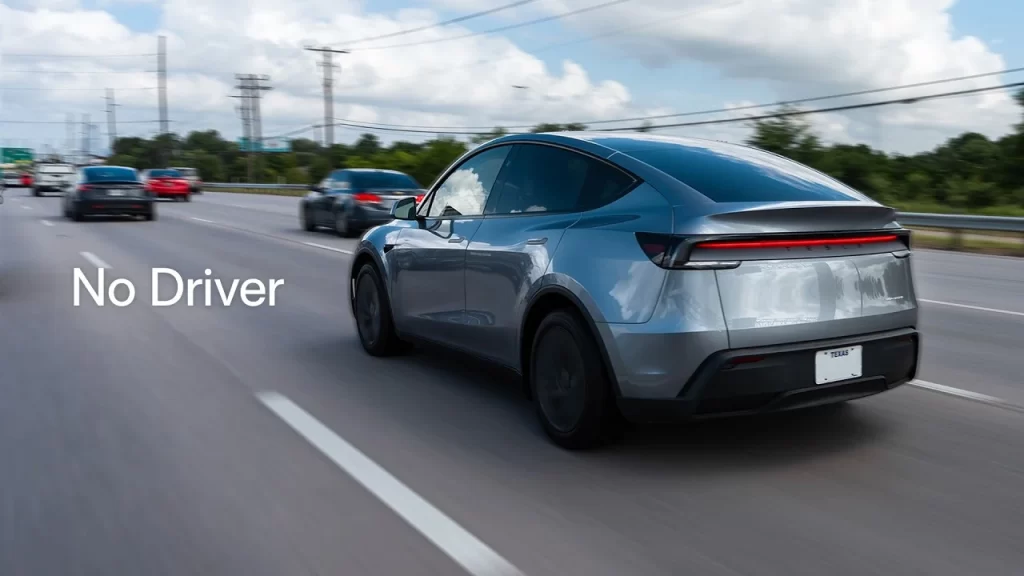In what could mark a historic first for the automotive industry, Tesla has successfully delivered a Model Y to a customer’s home without a driver or delivery personnel inside the vehicle. The event, captured and published in an official video by Tesla, showcases a completely autonomous vehicle handling real-world traffic conditions during a 30-minute delivery journey.

The video demonstrates the Tesla Model Y navigating independently from a parking garage to the customer’s residence. Along the way, it handled a range of complex scenarios, including stop signs, traffic lights, lane changes, intersections, and highway driving—all without human intervention. The vehicle reportedly began the trip in Robotaxi mode and then transitioned to Tesla’s Full Self-Driving (FSD) functionality to complete the delivery.
Tesla released two versions of the footage: a full-length 30-minute version and a shortened, 3-minute time-lapse clip.
While the video has sparked excitement, questions remain about whether this was a technology demonstration or a signal of things to come. Elon Musk has previously hinted at the idea of driverless vehicle delivery, but Tesla has not confirmed if such deliveries will become standard practice in the near future.
A Technological Milestone—Or Just a Showcase?
If genuine and not staged, this would represent the first known instance of a car manufacturer delivering a vehicle without human control or traditional transport methods. However, the lack of official confirmation and regulatory context has left some observers skeptical. Tesla has a history of releasing concept videos that hint at future possibilities. In fact, a 2016 Tesla video purporting to show full self-driving capability was later confirmed to have been heavily choreographed and not reflective of real-time capabilities at the time.
The Reality of Tesla’s Autonomy Today
Despite rapid progress and marketing around Tesla’s Autopilot and FSD features, no commercially available Tesla vehicle is currently classified as fully autonomous. All Tesla vehicles—including those equipped with FSD or Enhanced Autopilot—are legally and technically categorized as Level 2 autonomy, according to SAE standards. This classification requires a human driver to remain attentive and ready to take over at all times.
In comparison, Level 3 autonomy, which allows hands-off driving in certain conditions without requiring the driver to remain fully engaged, is currently limited to a few models from other manufacturers. These include:
-
BMW 7 Series (Level 3, approved in Germany),
-
Mercedes-Benz S-Class and EQS (approved in parts of Germany, California, and Nevada),
-
100 Honda Legend units operating with Level 3 autonomy in Japan.
Tesla has yet to achieve such certification for any of its vehicles in any global market.
A Glimpse Into the Future?
While this self-driving delivery video is undeniably impressive, it remains unclear whether it represents a revolution in vehicle logistics or a strategic showcase of Tesla’s ongoing software development. Regulatory hurdles, safety concerns, and public policy limitations continue to challenge the rollout of higher levels of autonomy across the industry.
Still, the vision is clear: Tesla aims to redefine not just how we drive—but how cars reach us.